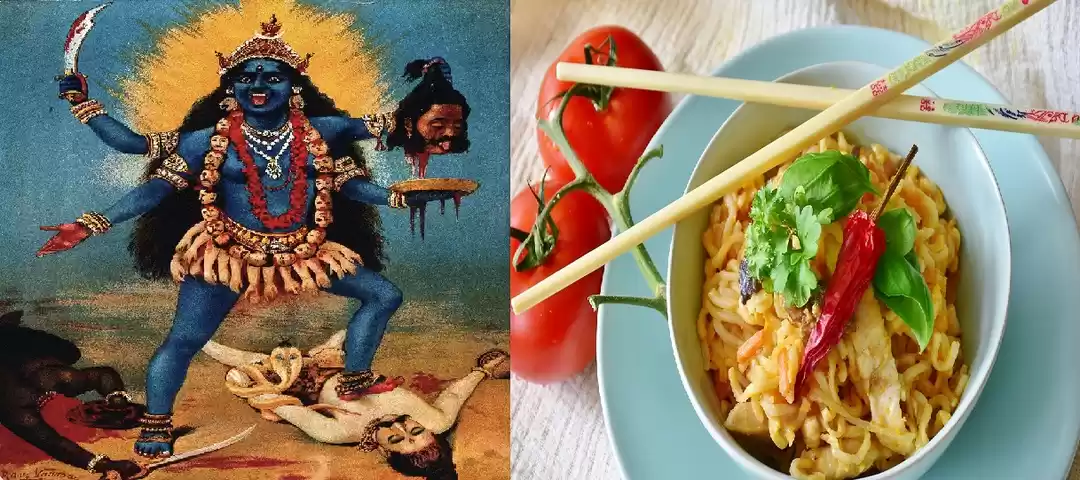
Kolkata is my hometown. Though I had left this place long back, a part of my heart always belongs there. I still fumble to call this place Calcutta, as I was born in a city known as this.
Kolkata is a kaleidoscope - a melting pot of cultures (beyond only the Bengali culture), with Bengalis comprising less than 50% of the population, with the rest filled up by communities from the other parts of India, Marwaris, Sikhs, Gujaratis, Biharis, Tamils, and many communities from other parts of the world, Chinese, Parsis, Anglo-Indians and even Jews.
If you have stayed in Kolkata for a long time, and have not seen this part of the city, or you are new to Kolkata, here is my suggestion for you to explore:
1. Tiretti Bazaar (in Bowbazaar area in Central Kolkata) : The Chinese Community
The Chinese came to Kolkata as long back as in the 18th century. They took shelter in the Grey town area, next to where the Anglo-Indians were staying. The same area has evolved to become what we know as Tiretti Bazaar today. This was the place where most of the Chinese people settled down, with Chinese temples, India's only newspaper in Chinese that is still available today, and the amazing eateries known for Chinese breakfast (yes, that's what you should try here!). After the civil war in the 1940's, another stream of Chinese people reached Kolkata, this time settling down in the eastern part of the city, now known as Tangra. Most of the Chinese people in Kolkata, have traditionally been associated with leather, food and beauty industries.
While, if you speak to the Kolkatans, you will hear a lot more about Tangra for Chinese food and cheap alcohol, I would suggest you to visit the Tiretti Bazaar area to see where it all started from, along with the remnants of the Chinese cultures and their people. You might be surprised to meet Chinese women in saree, now married into Bengali families, or houses with Chinese surnames listening to old Hindi songs.
2. Bowbarracks : The Anglo-Indian Community
The Anglo-Indian community essentially refers to the British population who stayed back when India became independent. The community, however, now is largely mixed with Indian population and often looked at as a mixed ancestry of British and Indians. Bowbarracks is an area in the central Kolkata, in the back-alley of the city having red-brick block houses. About 100 families stay here, and have been opposing demolishing of the houses here, which often are an attractive place for modern day real-estate businessmen. Apart from Bowbarracks, the Ripon street and Park street areas have Anglo-Indian population too.
The population of Anglo-Indians has reduced considerably, with the older generation dying and the younger ones moving abroad for better opportunities. 90's kids must have grown up hearing the legendary quiz master Barry O' Brien, his father Neil O' Brien and now his brother and Trinamool Congress MP Derek O' Brien. Every year, the president of India nominates 2 representatives from this community to reach Rajyasabha. Traditionally, the community members have controlled the clubs, racecourses and the music scene in Kolkata. Christmas celebration at Bowbarracks is an occasion to witness for its spirit and differentiated approach. Nowhere on earth, you will see a Santa Claus coming in the iconic pulled rickshaws of Kolkata.
3. Buddhist Temples : The Buddhist Community

My favourite of the bunch of 7-8 Buddhist temples in Kolkata, is Dharamkur Vihar, for two reasons. One, it is next to the Bowbarracks area, and fits nicely to the photowalk I went on. Two, it is managed by Bengal Buddhist Association who also manages Buddhist temples in Bangladesh. Much to my surprise I learnt that, apart from the well-known countries for Buddhism, this faith has presence in Bangladesh also.
4. Synagogues : The Jews Community
After growing up in Kolkata, it's only a few months back I came to know that there are 5 synagogues in Kolkata, out of which 2 are used till date. The Jews history in Kolkata dates back to the eighteenth century and most of the Jews people were from Baghdad. They came here for trading. The number of Jews population decreased considerably post the formation of the country Israel, and is now around 100 only.
Out of the 5 synagogues, I visited the grandest one, known as Maghen David Synagogue. A permission is to be taken from the Jewish Girls' school for visiting the same. Elias David Joseph Ezra built this synagogue in memory of his father David Joseph Ezra.
5. The food lane next to Bowbarracks : The Muslim community
Right adjacent to the Bowbarracks area, food stalls were initially set up by the Muslim community members, who used to help the Anglo-Indians in baking breads and taking care of other chores. Over time, it got evolved into a full-fledged 'Gali' (lane) with food stalls on both sides. from biriyani to poori, beef patty to chai, this food stalls have traditional recipe and still feed the immigrant workers at a reasonable price. In the past, butchers and tanners in this area used to supply beef and leather to the English community.
This gali does not belong to a community any more per se, and Muslims are an integral part of Kolkata as much as Hindus are.
I did this tour with Calcutta Photo Tours, and its founder Manjit Singh Hoonjan. Along with this tour called, "Culture Kaleidoscope", they offer descriptive tours of various kinds, representing Kolkata and its history amazingly well.
Keep going places,













